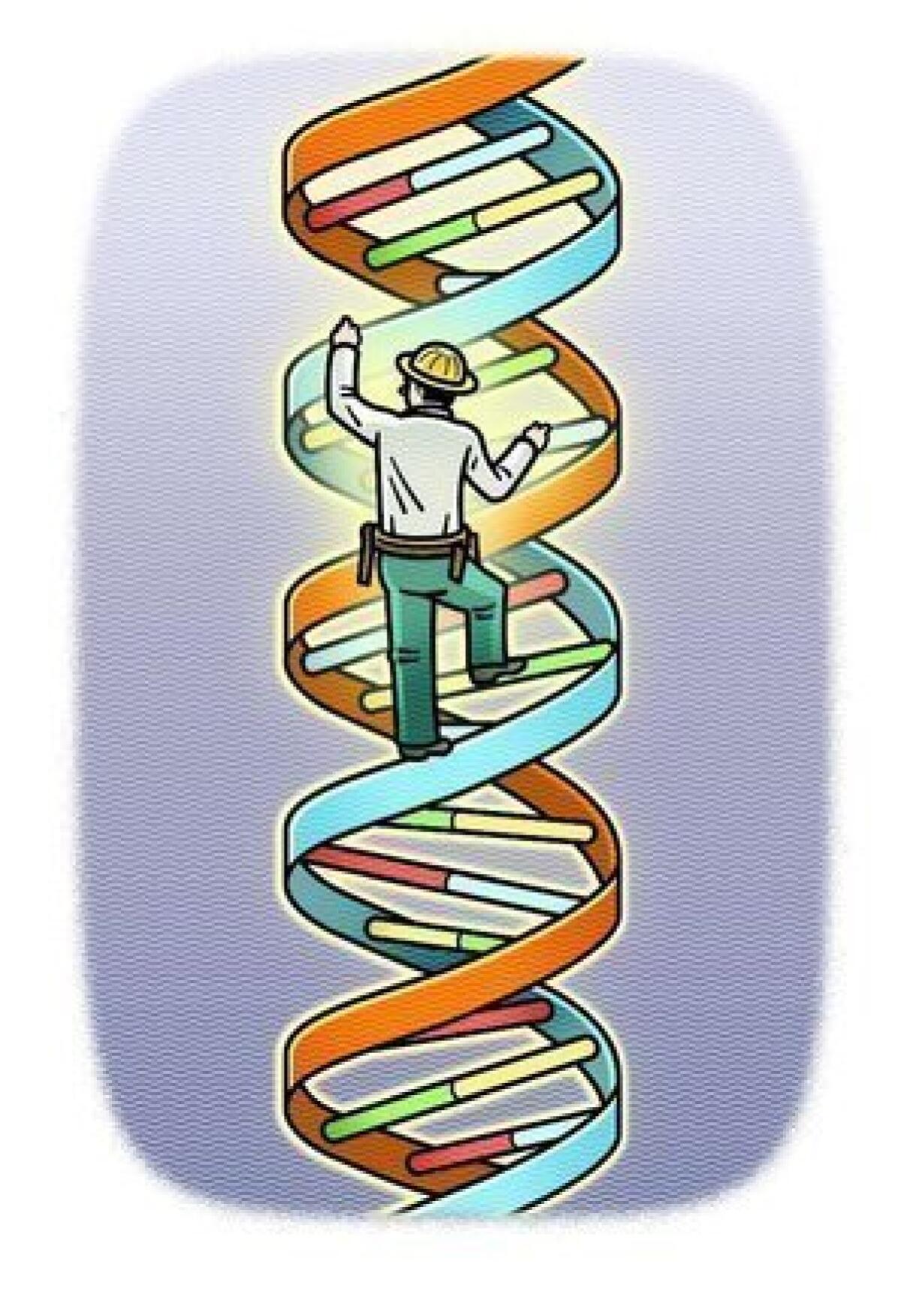New gene therapy method replaces mitochondrial DNA, study says

- Share via
Scientists have demonstrated a new type of gene therapy that would – in principle – allow mothers to avoid saddling their children with rare diseases that could result in heart problems, dementia, diabetes, deafness and other significant health issues.
The disorders in question are all due to mutations in one of the 37 genes in our mitochondrial DNA. “Mitochondria are structures within cells that convert the energy from food into a form that cells can use,” according to this explainer from the NIH’s National Library of Medicine. Mitochondria have their own DNA, often designated as mtDNA. This is separate from the nuclear DNA in our chromosomes, where most of our genetic information is stored.
Mitochondrial DNA is passed down, essentially unchanged, from mother to child. So if a woman knows that she has a mutation that causes Leigh syndrome (a neurological disorder that is often fatal), Leber hereditary optic neuropathy (which causes vision loss), a rare type of epilepsy or one of the other inherited conditions related to mtDNA, she may not want to get pregnant.
An estimated 1 out of every 5,000 to 10,000 babies is born with some type of disorder related to faulty mtDNA, which works out to 1,000 to 4,000 kids in the U.S. each year, according to a report published online Wednesday by the journal Nature. A team of researchers led by reproductive biologist Shoukhrat Mitalipov at Oregon Health & Science University wondered whether they could use gene therapy to prevent these births.
They focused their efforts on a would-be mother’s eggs, since that’s where a child’s mtDNA comes from. Instead of trying to fix a faulty segment of mtDNA with a disease-causing mutation, Mitalipov’s team decided to replace all of the mtDNA in an egg with mtDNA from a healthy donor. The best way to do that, they reported, is to use the donor’s entire egg, with one exception: The egg cell’s chromosomes are removed and replaced with chromosomes from an egg from the would-be mother. That way, if the gene therapy results in a baby, the child can still inherit its mother’s brown eyes, mathematical ability or perfect pitch.
The research team collected eggs from volunteers. With 64 of those eggs, the scientists were able to remove the chromosomes and replace them with another set. They also kept 33 eggs intact to serve as controls.
The next step was to fertilize both sets of eggs by injecting them with sperm (a fertility treatment known as intracytoplasmic sperm injection, or ICSI). Sixty of the eggs that had been through a chromosome transplant were fertilized, and ultimately 19 developed into early-stage embryos called blastocysts. By contrast, 32 of the control eggs were fertilized via ISCI and 16 developed to the blastocyst stage.
If this had been an actual treatment, those blastocysts would then be transferred to the wombs of the would-be mothers. But the technology is still very much in the research stage, so the scientists turned the blastocysts into lines of embryonic stem cells and studied their properties in the lab.
The stem cells made from the embryos that had been through a chromosome transplant were “indistinguishable” from the stem cells made from the control embryos, according to the Nature report. In addition, the stem cells that had been through a transplant did in fact contain the mtDNA of the egg donor and the chromosomes of the would-be mother.
In another part of the experiment, the researchers applied the same techniques to rhesus macaques to see if the steps would work with frozen eggs. They wound up with four blastocysts that they transferred to a surrogate mother, resulting in the birth of one healthy baby monkey.
But would babies develop problems as they grew owing to the fact that their nuclear DNA and mtDNA were from different mothers? To find out, the researchers tracked four such monkeys for three years. The experimental monkeys had similar weight gain, blood chemistry and metabolism as control monkeys, the scientists reported.
The process didn’t go quite as smoothly with human eggs as it did with the monkey eggs. But it worked well enough that each treatment cycle – involving egg donation from both the would-be mother and a donor with healthy mtDNA – should result in at least two viable embryos, the scientists reported.
This technology still isn’t ready for general use, however. The research team wrote that the DNA transfer technique would have to be improved to “ensure that these procedures are safe. It is also crucial that the US Food and Drug Administration initiates careful review of these new developments.”
You can read a summary of the report online here.
Return to the Science Now blog.
RELATED: Monkey embryos cloned for stem cells, scientists say
Follow me on Twitter @LATkarenkaplan







